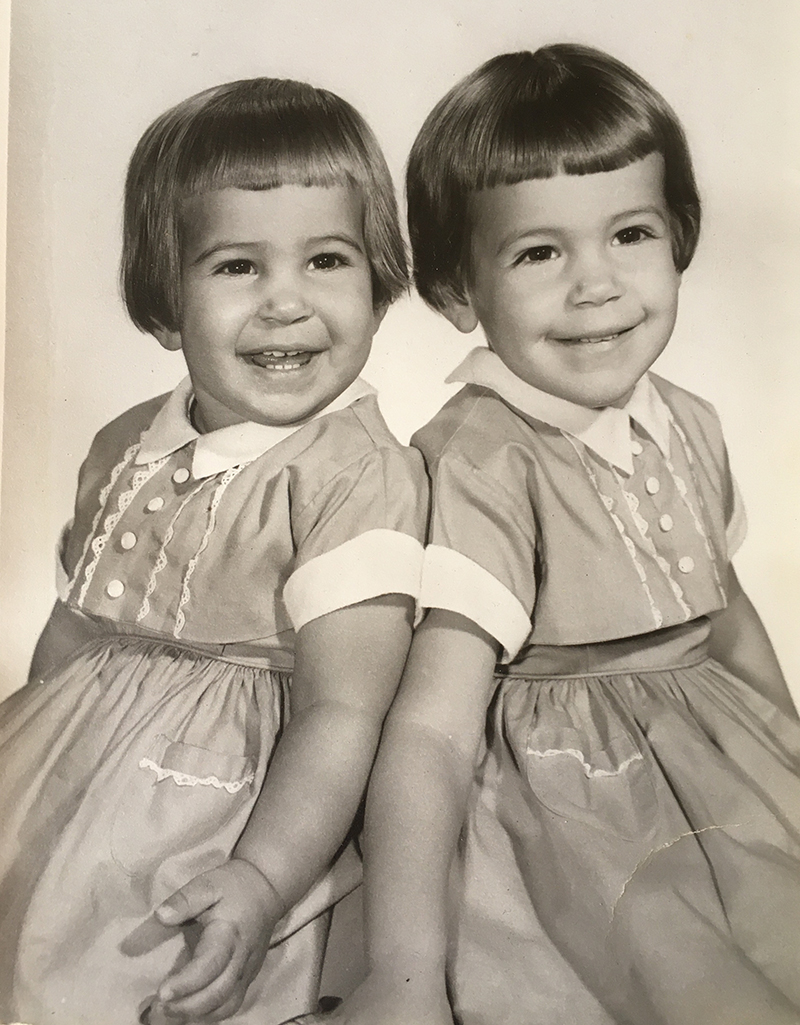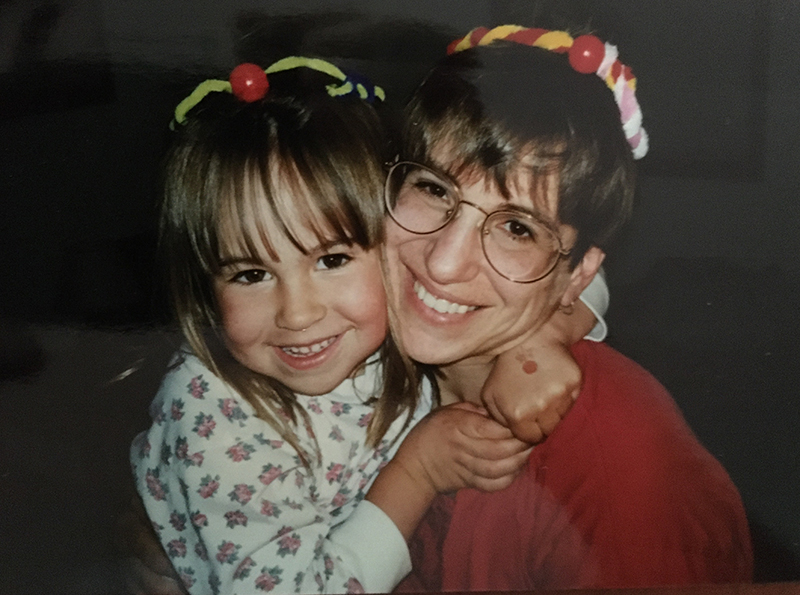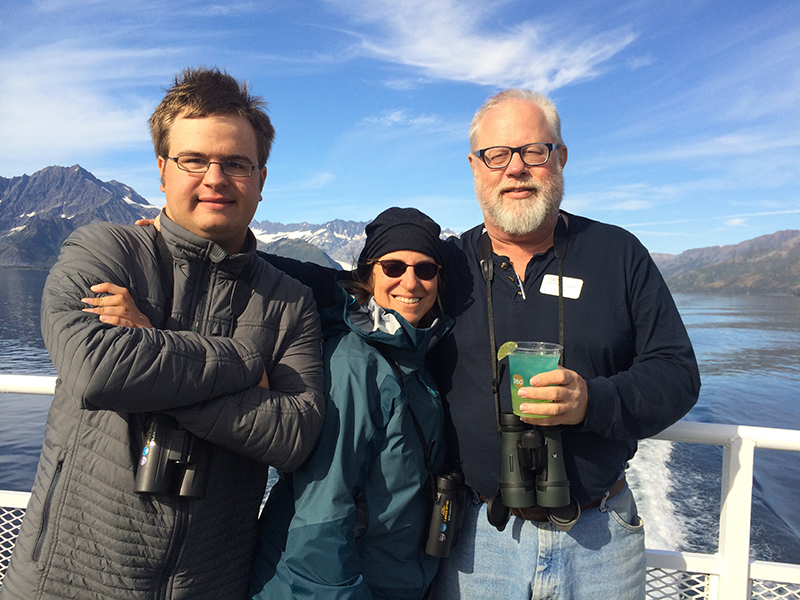Credit: NICHD
During a research career that spans four decades, NICHD’s Judith Kassis, Ph.D., has learned many lessons along the way. For the last 23 years, she has headed the Section on Gene Expression at NICHD, and before that, she spent 12 years as a researcher and regulator at the Food and Drug Administration (FDA). Dr. Kassis is a leader in the field of transcriptional gene repression by Polycomb group proteins (PcG), and her laboratory explores how genes are regulated during embryonic development.
“I like to follow up on unexpected results. Be open-minded about the answer, and test the hypothesis. A lot of experiments today are designed to prove a hypothesis, when you should always evaluate your idea and assumptions first,” shared Dr. Kassis. “Today’s research environment limits one’s ability to do this, but early on, I could chase whatever I wanted in the lab. When I started my graduate studies, I didn’t even think about my career. I simply loved science and wanted to do it.”
Growing Up in a Close-Knit Family

Credit: Judith Kassis, Ph.D.
Dr. Kassis was the second of six children, raised in Sacramento, CA. Her paternal grandparents were Lebanese American and had an arranged marriage. They lived in North Dakota, where her grandfather owned a candy store, but the Dust Bowl forced the couple to relocate with extended family in California. Dr. Kassis’ father worked as a grocery store manager and insurance salesman. He later went back to school to become a certified financial planner. Dr. Kassis’ mother, who grew up in Minneapolis, was a college graduate and medical technician. She became a full-time homemaker soon after becoming a mother.
Looking back, Dr. Kassis is proud of carving out her career and having the opportunity to conduct research at NIH. “My mom didn’t work outside of the home, and I didn’t know what I was going to do. It’s amazing to consider where I ended up with this career when I didn’t have a plan,” she said.
Dr. Kassis’ mother was active in the American Field Service 
Her parents also planned independent trips for their children. “When I was 18 years old, my older sister and I took Greyhound buses all over the country and visited friends of my parents. Remember, we didn’t have cell phones back then,” she said. Dr. Kassis and a younger brother also visited Mexico, where they took buses to Guatemala and El Salvador. “My parents were very loving, generous people, who encouraged us to be curious and try different things.”
Getting a Start in Science
For college, Dr. Kassis attended the University of California at Santa Barbara, initially with no idea of what she wanted to study. “This is going to sound extremely nerdy, but I took a biochemistry class and loved it. I studied so hard that I could actually ‘see’ the connections between all the different biochemical pathways,” she said. “For my final exam, I got an A++, and my professor helped me apply for a summer research fellowship through the National Science Foundation. It was the summer of ‘77, and I absolutely loved working in the lab.” For her fellowship, Dr. Kassis studied malaria and enzymatic pathways at the University of California, Riverside, and then published her first paper.
During her senior year, Dr. Kassis worked in the laboratory of Leslie Wilson, Ph.D. 
Her thesis advisor was Jack Gorski, Ph.D. 
Developing a Lifelong Interest in Epigenetics
While finishing graduate school in 1983, Dr. Kassis decided to change fields. She found a new postdoctoral position in a lab headed by Patrick O'Farrell, Ph.D. 
“In my opinion, it was the best time to be in biology. The homeodomain was discovered—flies had it, humans had it. For the first time, people recognized that animals had so much in common at a genetic level. It was very exciting,” she said. “But at that time, cloning a gene and sequencing it was a whole project. For my postdoc, I cloned the engrailed gene from a related Drosophila species and sequenced it. Experiments have completely changed now. It’s great that you can do more, but back then, you had more time to think.”
Dr. Kassis published several postdoctoral papers and got married as she wrapped up her four-year position. “I had great advisors, but there was no career mentoring back then. People didn’t really talk much about careers. The biotech industry was just starting. No one asked me, ‘Do you want to be a [principal investigator]?’ Everything was just about the science,” she explained. Her husband received a job offer from the FDA’s Center for Biologics Evaluation and Research (CBER). So, Dr. Kassis applied for jobs in the Washington, DC, area and received a job offer from CBER, too.
In 1987, she and her husband moved to the East coast, where Dr. Kassis split her time between leading a small research laboratory and regulating products made in living cells for CBER. At the time, the FDA had laboratories on the NIH campus in Bethesda, MD, and Dr. Kassis collaborated often with NIH researchers. Like all principal investigators at CBER, her progress was reviewed under NIH’s tenure system, and she received tenure in 1994. The next few years brought many exciting changes.

Credit: Judith Kassis, Ph.D.
The first was related to Polycomb Response Elements (PREs). During embryonic development, some genes must be silenced or “inactivated” at certain times and places, for instance, in the development of different tissues and organs. This silencing is orchestrated by Polycomb group proteins (PcG), which must be recruited to the gene in question. The genes themselves contain special sequences called PREs, which bring in an intermediary—PRE DNA-binding proteins—to recruit the PcGs.
Dr. Kassis and colleagues made a string of discoveries beginning with an unexpected observation in fruit flies that enabled Dr. Kassis to easily identify PREs. She initially wanted to identify regulatory DNA by cloning it and placing it into a vector to make transgenic flies. The vector also contained a marker for eye color, a common research practice to easily identify transgenic flies from normal flies. When white-eyed flies were injected with the vector, their transgenic offspring had colored eyes. Normally, flies with two copies of the transgene (i.e., homozygotes) have a darker eye color than those that only have one copy (i.e., heterozygotes).
However, in Dr. Kassis’ experiments, when certain fragments of DNA were cloned into the transgene vector, the eye color of the homozygotes was lighter than that of heterozygotes. In fact, most of these homozygotes had white eyes, suggesting that the eye color marker was somehow blocked or silenced. Dr. Kassis called this phenomenon “pairing-sensitive silencing.” Later, she discovered that this phenomenon was caused by the PREs that she had cloned into the vector. “When I presented my findings at a conference, people were very excited, and some even mentioned they had similar observations but had not followed up. I think that’s how I distinguished myself—I follow up on unexpected, interesting findings,” she said.
Dr. Kassis and her laboratory also discovered the first PRE binding protein, Pho, and later identified three more: Pho-like, Spps, and Combgap. “The benefit of having two jobs at FDA was that I didn’t have to worry about publishing in high-profile journals. I didn’t have to be a bigshot. I could just do good work,” explained Dr. Kassis. “At that point, I was just doing what I was interested in, and I found [PREs], and it was so much fun.”

Credit. Judith Kassis, Ph.D.
Dr. Kassis worked at CBER for 12 years, heading two licensing committees and her small lab. During that time, she also had her two children. “It was very hard to do both the regulatory work and the research. I could see that I was going to have to make a decision, especially once you have kids. That’s like three jobs: the lab, the regulatory work, and your children,” she said. She successfully applied for an opening at NICHD in 1999 to head a research lab, and she brought along her staff scientist, Lesley Brown, Ph.D., and a postbaccalaureate fellow. “It was a very good time to look for a new job, and I want to highlight Lesley’s contribution. She’s a transcription factor expert and discovered Pho in my lab. I’m not sure I would have gotten the [NICHD] job without her and the timely publications.”
NICHD colleague Paul Love, M.D., Ph.D., said that Dr. Kassis is “patient, inquisitive, supportive, and always willing to listen. Scientifically, she exemplifies the ‘model investigator.’ Early in her career, she identified an important but very complex question in biological science, Polycomb-mediated gene repression, and she has devoted her career to steadily chipping away at the problem. Along the way, she has come up with new insights and challenged existing paradigms. It doesn’t get any better than that!”
Reflecting on the Past
When Dr. Kassis first started her lab, she did a lot of work at the bench. Even today, you can find her observing fly embryos under the microscope and doing her own immunostaining. On some of her early papers, she was the only author because the lab was so small. “It can be difficult hiring good postdocs when you’re starting out,” said Dr. Kassis. “My advice for tenure-track investigators is to attend meetings, talk to people, talk to journal editors, and promote yourself. If you’re shy, pretend you are not.”
She also recommends finding a “core scientific family.” Dr. Kassis attends a small, regional meeting, which originally consisted of five laboratories interested in somatic chromosomal pairing in flies. “We collaborate and review each other’s papers before submission. I also found a postdoc through this group. If you’re not currently part of one, consider starting your own group.”
At one point, Dr. Kassis considered taking a break from research to teach children, like her son, Zack, who have autism spectrum disorder (ASD). “When he was younger, one of the hardest things we did was fight for resources. It took a lot of time and emotional energy, but things have gotten better for children and their families.” Dr. Kassis also appreciates the flexibility of science that can enable a work-life balance. “If I had to take my son to therapy, I could go and make up the time later. But I didn’t travel to meetings as much as I might have. My husband was very supportive, so I could have gone, but I didn’t want to leave them.” After graduating from high school, Zack attended a program in Arizona to learn to live independently. He still resides there, with limited assistance from an agency that supports adults with ASD.

Credit: Judith Kassis, Ph.D.
Many colleagues have benefitted from Dr. Kassis’ career and mentorship. Todd Macfarlan, Ph.D., recalled his early years as a tenure-track investigator at NICHD, when the intramural program reorganized into affinity groups that included several labs. “Dr. Kassis became the head of our affinity group, and she demonstrated tremendous leadership, creating a fun and exciting environment for sharing our science with our close colleagues. This was a truly exceptional incubator for me, personally, and a major part of my lab’s early success,” he said.
Mitzi Kuroda, Ph.D. 
Preparing for the Future
Dr. Kassis, who is now in her mid-60s, plans to retire next year. Her timeline for retirement has been influenced by various decisions and experiences over the last several years. One of the most pivotal was the unexpected death of her older sister Diane, who passed away four years ago from an aggressive cancer. “We were very close and had shared a room growing up. Her death made me realize that there’s more I want to do. I want to spend more time with loved ones,” said Dr. Kassis. In addition to her son, she has a daughter, Sandy, who lives in Louisiana, and she enjoys visiting both of them. Dr. Kassis and her husband also raise chickens and bees and have three dogs. “While I never planned on working until my 80s, I realize now that things can happen.”
About eight years ago, Dr. Kassis considered switching fields but never did. Instead, she decided to tackle the unfinished projects that accumulated over the years. She also stopped hiring postdoctoral fellows once she committed to her retirement timeline. These decisions resulted in a perfect pairing of projects ideal for postbaccalaureate fellows, who generally stay for one or two years before moving on to graduate school. Dr. Kassis also does not have to concern herself with high-profile journals, which are more important for a postdoctoral fellow’s future job prospects.
Anna Horacek, a former postbaccalaureate trainee currently in the Molecular Cell and Biology Program at the University of California, Berkeley, is grateful for her time in Dr. Kassis’ lab. “Notably, Dr. Kassis recognizes that each mentee is unique. While I struggled with communication and specific organizational skills, others needed support with critical thinking and designing experiments. With these objectives in mind, Dr. Kassis altered her approach for each person. She encouraged us to think of future experiments, set up one-on-one meetings to discuss professional development, and provided opportunities for us to present our research.”
Currently, one of the lab’s most exciting projects looks at the stability of a gene’s “on and off” transcriptional state and how it is regulated. The lab is using a 79-kilobase transgene to study two epigenetically regulated enhancers, regulatory DNA sequences, important in the Drosophila wing. She and her colleagues found that deletion of either of these enhancers from the 79-kilobase transgene causes flies to have mutant wings. Surprisingly, deletion of the same enhancers from the endogenous locus (i.e., where it occurs naturally in the fly’s genome) does not cause the same wing mutations.
“No one has moved a domain and then tried to fix it. That’s essentially what we’re doing,” said Dr. Kassis. “The only difference between the transgene and the endogenous locus is that the endogenous locus has ‘boundaries’ that stop the spread of epigenetic marks and enhancer activity. These ‘boundaries’ make it so that everything is concentrated inward in the gene,” she explained. The lab recently found that adding these boundaries to their transgene also influenced the gene’s “on” and “off” transcriptional states, which fits into Dr. Kassis’ hypothesis. Dr. Kassis aims to wrap up this project and finish writing six papers by next year.
“What I’ve learned is how redundant and resilient development is,” said Dr. Kassis. “When you have a developmental disorder, the range of phenotype is wide because there’s backup in the system. I’m fascinated that even though you can make so many mutations in a gene, there are just as many redundant enhancers that enable the fly to live. But how many subtle defects do they have? It’s all very interesting.”

 BACK TO TOP
BACK TO TOP